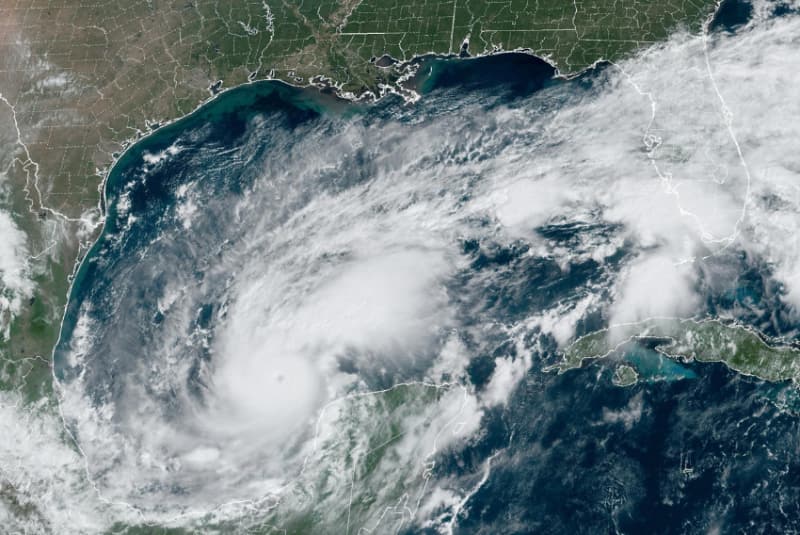Hurricane Milton losses could amount to tens of billions, but uncertainty high: BMS’ Siffert

Insurance industry losses from major hurricane Milton’s eventual impacts in Florida could amount to tens of billions of dollars, but there is high uncertainty still as the eventual landfall location and intensity will greatly influence the eventual cost for the industry, according to Andrew Siffert, Senior Meteorologist at BMS Group.
As we’ve been reporting, hurricane Milton has intensified in just over 24 hours from a tropical storm with 60 mph winds, to now a Category 5 storm, as of an update from the NHC just now, with sustained winds now estimated at 160 mph.
There remains significant uncertainty over the eventual landfall location on the Florida Peninsula’s west coast, as well as in the intensity of the storm when it arrives.
But, with Milton expected to continue its intensification for a time before weakening a little, but at the same time growing in size with an expanded wind field, the potential for very damaging surge and wind impacts are clear.
Siffert of insurance and reinsurance broking group BMS explained, “Forecast models show uncertainty in Milton’s exact landfall, but its intense winds, possible Category 5 strength later tomorrow, and weakening but widening wind field raise concerns about immense industry losses.
“The damages have the potential to be between $10 billion to $100 billion depending on the wide range of scenarios that now heavily depend on track and intensity forecasts at landfall.”
He went into more detail in his latest blog post, in which Siffert expanded, “It is still too early to delve into specific impacts, as the uncertainty regarding the landfall track will significantly influence damage estimates, potentially amounting to tens of billions. This is why the catastrophe modeling output to be released will show a broad range of loss estimates. Each one of the tracks will be sensitive to the landfall location and intensity. In fact, in some cases, modeling firms might hold off on issuing early guidance given the forecast uncertainty and the large loss range as right now, an industry loss could be as low as $10B but as high as $100B, so overall guidance is not very useful given the uncertainty.”
Siffert also noted that, “Do not be misled by Milton’s small size. With almost the entire Gulf of Mexico ahead, the storm’s shape and size could still evolve significantly, which will be crucial to the forecast and may have major implications for the insurance industry’s overall losses from Milton.”
Discussing the latest forecast model output, Siffert noted, “There has been a slight model consensus shift in a landfall location over the last 24 hours to the south of Tampa. Still, this shift is too close for comfort to Tampa, and any landfall location along the central west coast of Florida will be a major event for the insurance industry. The North American weather pattern and the upper-level trough that will steer Milton toward Florida are still developing, so there is some forecast uncertainty. The forecast models are not as locked in as they were with Helene, and the latest super ensemble shows just how much uncertainty there is between the GFS and UKMet Model, with the trusty ECMWF model in the middle of the consensus.”
He also cautioned that while that track has shifted slightly south of Tampa, “A landfall north of Tampa Bay (worst-case scenario) is still very much on the table.”
Siffert also highlighted that strong and potentially damaging winds are possible further inland, saying, “As mentioned above, Milton also interacts with the upper-level trough and starts its extratropical transition; the wind field on the left side may be markedly stronger than the right. This could lead to strong wind gusts from Orlando to Daytona on the back side of the hurricane.”
Land interaction with the Yucatan peninsula of Mexico, while potentially bringing a catastrophe bond into play, could be the best chance for Milton losing some of its intensity and changing for the better what currently looks like a very dangerous situation for those on the Florida coast.
You can track this and every Atlantic hurricane season development using the tracking map and information on our dedicated page.
Also read:
– As hurricane Milton intensifies, Mexico’s catastrophe bond comes into focus.
– Material hurricane Milton losses could change 2025 property reinsurance price trajectory: KBW.
– Cat bond & ILS managers explore options to free cash, as hurricane Milton approaches.
– Hurricane Milton: First Tampa Bay storm surge indications 8 to 12 feet.
– Hurricane Milton is biggest potential ILS market threat since Ian in 2022: Steiger, Icosa.
– Hurricane Milton forecast for costly Florida landfall. Cat bond & ILS market on watch.






